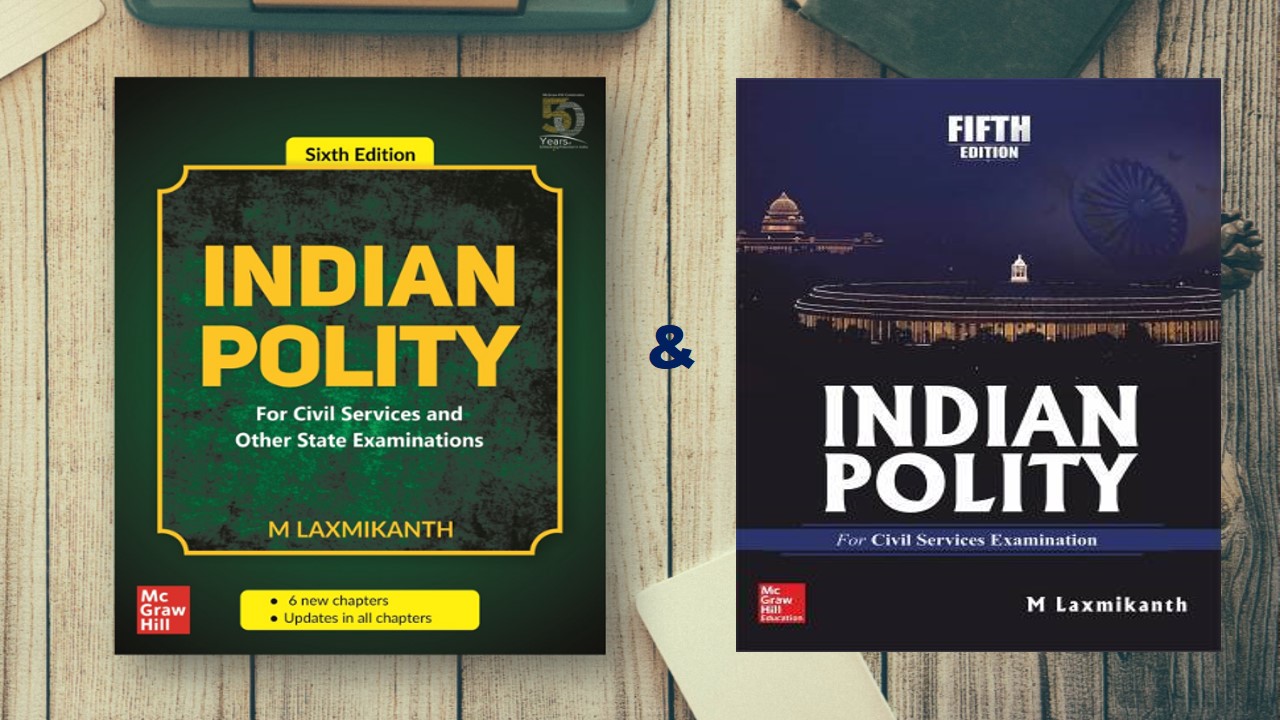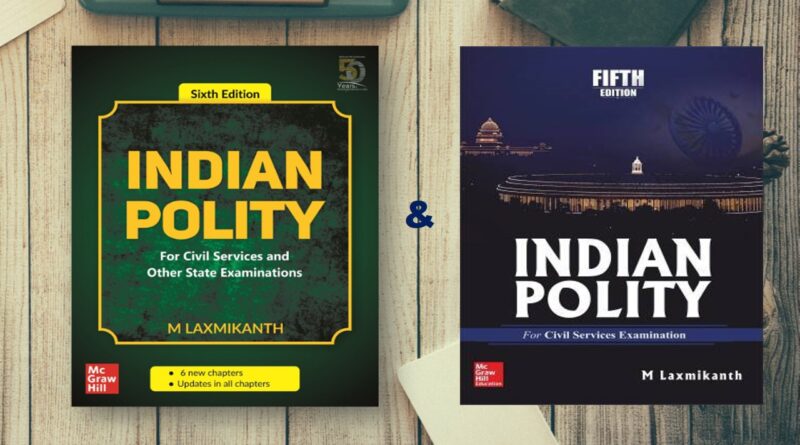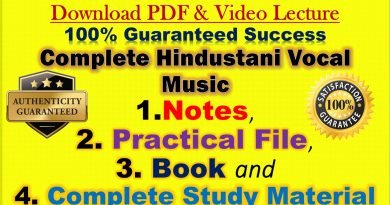INDIAN POLITY PDF by M Laxmikanth Pdf Book Free Download
- Version Latest Book, #1 Trending Download
- Download 87163
- File Size 187 MB
- File Count 1
- Create Date November 14, 2021
- Last Updated November 15, 2021
Download New and Latest Indian Polity Book For UPSC by M Laxmikanth for Both 6th edition & 7 Edition Free Pdf - Indian Polity Notes - Download Polity Notes for UPSC Indian Polity E-Books - PDF Indian Polity by M Pdf Book Free Download Download INDIAN POLITY E Pub-PDF Book Indian polity Indian Polity by M Laxmikanth 6th Edition PDF Free Upsc. Indian Polity Tutorial in PDF Indian Polity Notes for UPSC Prelims PDF Free Download PDF Indian Polity M Laxmikanth Indian Polity Pdf indian polity laxmikanth ppt indian polity and governance notes. Pdf indian polity for upsc indian polity and governance pdf free download indian polity notes pdf vision ias indian polity handwritten notes in english pdf indian polity notes for ssc exam pdf laxmikant polity notes upsc pdf.
Indian polity PDF download
This polity book pdf is one of the best books for the aspirants who are preparing for preliminary examination of UPSC civil service.
Students can also refer m laxmikant book pdf to cover the polity section each and every topic in detail and can measure their performance by doing practice on objective polity questions. For civil service examination these two are best to cover the polity section.
Aspirants who want to buy this book can easily purchase it from a local bookstore or it is also available online to buy.
Other important books for the UPSC aspirants are shankar ias environment book pdf, gc leong geography book and other.
About Indian Polity PDF Book
Book Name –Indian Polity PDF
Format- PDF
Size- 187 mb
Pages- 940 (Hindi)
Language-English and Hindi

Indian Polity book Pdf Contents
PART I
Constitutional Framework
PART II
System of Government
PART III
Central Government
PART IV
State Government
PART V
Local Government
PART VI
Union Territories and Special Areas
PART VII
Constitutional Bodies
PART VIII
Non-Constitutional Bodies
PART IX
Other Constitutional Dimensions
PART X
Political Dynamics
PART XI
Working of the Constitution
Indian Polity M. Laxmikant 6th edition
Features of ‘Indian Polity’ By M. Laxmikanth — 6th Edition
- 80 chapters and 16 appendices (940 pages).
- Chapters rearranged as per the latest pattern of the examination.
- Covers the recent developments in Jammu & Kashmir and Ladakh.
- Previous years’ questions and practice questions for both Preliminary and Mains Examinations.
- 6 New chapters: (1) Goods and Services Tax Council (2) National Commission for Backward Classes (3) National Investigation Agency (4) National Disaster Management (5) Role of regional parties (6) Coalition Government.
Indian Polity by M Laxmikanth Content
Preface to the Sixth Edition vii
Preface to the First Edition ix
Acknowledgments xi
Year-Wise Break-up of the UPSC Questions on Indian Polity (General Studies—Prelims) xiii
Year-Wise Break-up of the UPSC Marks on Indian Polity (General Studies—Mains) xv
About the Civil Services Examination xvii
List of Tables xxxv
Part-I
(Constitutional Framework)
1. Historical Background
- The Company Rule (1773–1858)
- The Crown Rule (1858–1947)
- Notes and References
2. Making of the Constitution
- Demand for a Constituent Assembly
- Composition of the Constituent Assembly
- Working of the Constituent Assembly
- Committees of the Constituent Assembly
- Enactment of the Constitution
- Enforcement of the Constitution
- Experts Committee of the Congress
- Criticism of the Constituent Assembly
- Important Facts
- Hindi Text of the Constitution
- Notes and References
3. Salient Features of the Constitution
- Salient Features of the Constitution
- Criticism of the Constitution
- Notes and References
4. The preamble of the Constitution
- Text of the Preamble
- Ingredients of the Preamble
- Key Words in the Preamble
- Significance of the Preamble
- Preamble as Part of the Constitution
- Amenability of the Preamble
- Notes and References
5. Union and its Territory
- Union of States
- Parliament’s Power to Reorganise the States
- Exchange of territories with Bangladesh
- Evolution of States and Union Territories
- Notes and References
6. Citizenship
- Meaning and Significance
- Constitutional Provisions
- Citizenship Act, 1955
- Single Citizenship
- Overseas Citizenship of India
- Notes and References
7 Fundamental Rights
Features of Fundamental Rights 7.1
Definition of State 7.2
Laws Inconsistent with Fundamental Rights 7.3
Right to Equality 7.4
Right to Freedom 7.10
Right Against Exploitation 7.16
Right to Freedom of Religion 7.17
Cultural and Educational Rights 7.19
Right to Constitutional Remedies 7.20
Writs—Types and Scope 7.21
Armed Forces and Fundamental Rights 7.23
Martial Law and Fundamental Rights 7.24
Effecting Certain Fundamental Rights 7.24
Present Position of Right to Property 7.25
Exceptions to Fundamental Rights 7.26
Criticism of Fundamental Rights 7.27
Significance of Fundamental Rights 7.28
Rights Outside Part III 7.29
Notes and References 7.30
8. Directive Principles of State Policy
Features of the Directive Principles 8.1
Classification of the Directive Principles 8.2
New Directive Principles 8.3
Sanction Behind Directive Principles 8.3
Criticism of the Directive Principles 8.4
Utility of Directive Principles 8.5
Conflict Between Fundamental Rights and Directive Principles 8.5
Implementation of Directive Principles 8.7
Directives Outside Part IV 8.9
Notes and References 8.10
9. Fundamental Duties
Swaran Singh Committee Recommendations 9.1
List of Fundamental Duties 9.2
Features of the Fundamental Duties 9.2
Criticism of Fundamental Duties 9.2
Significance of Fundamental Duties 9.3
Verma Committee Observations 9.4
Notes and References 9.4
10 Amendment of the Constitution
Procedure for Amendment 10.1
Types of Amendments 10.1
Criticism of the Amendment Procedure 10.3
Notes and References 10.4
11 Basic Structure of the Constitution 11.1–11.4
Emergence of the Basic Structure 11.1
Elements of the Basic Structure 11.2
Notes and References 11.4
Part-II
System of Government
12 Parliamentary System
Features of Parliamentary Government 12.3
Features of Presidential Government 12.4
Merits of the Parliamentary System 12.5
Demerits of the Parliamentary System 12.5
Reasons for Adopting Parliamentary System 12.6
Distinction between Indian and British Models 12.7
Notes and References 12.8
13 Federal System
Federal Features of the Constitution 13.2
Unitary Features of the Constitution 13.3
Critical Evaluation of the Federal System 13.5
Notes and References 13.7
14 Centre–State Relations
Legislative Relations 14.1
Administrative Relations 14.5
Financial Relations 14.9
Trends in Centre–State Relations 14.16
Notes and References 14.24
15 Inter-State Relations
Inter-state Water Disputes 15.1
Inter-State Councils 15.2
Public Acts, Records and Judicial Proceedings 15.3
Inter-State Trade and Commerce 15.3
Zonal Councils 15.4
Notes and References 15.6
16 Emergency Provisions
National Emergency 16.1
President’s Rule 16.6
Financial Emergency 16.10
Criticism of the Emergency Provisions 16.11
Notes and References 16.14
Part-III
Central Government
17 President
Election of the President 17.3
Qualifications, Oath and Conditions 17.5
Term, Impeachment and Vacancy 17.6
Powers and Functions of the President 17.7
Veto Power of the President 17.10
Ordinance-making Power of the President 17.12
Pardoning Power of the President 17.14
Constitutional Position of the President 17.15
Notes and References 17.17
18 Vice-President
Election 18.1
Qualifications, Oath and Conditions 18.1
Term and vacancy 18.3
Powers and Functions 18.3
Indian and American Vice-Presidents Compared 18.4
Notes and References 18.4
19 Prime Minister
Appointment of the Prime Minister 19.1
Oath, Term and Salary 19.2
Powers and Functions of the Prime Minister 19.2
Role Descriptions 19.3
Relationship with the President 19.4
Chief Ministers who became Prime Ministers 19.4
Notes and References 19.5
20 Central Council of Ministers
Constitutional Provisions 20.1
Nature of Advice by Ministers 20.2
Appointment of Ministers 20.2
Oath and Salary of Ministers 20.3
Responsibility of Ministers 20.3
Composition of the Council of Ministers 20.4
Council of Ministers vs Cabinet 20.5
Role of Cabinet 20.5
Role Descriptions 20.6
Kitchen Cabinet 20.6
Notes and References 20.7
21 Cabinet Committees
Features of Cabinet Committees 21.1
List of Cabinet Committees 21.1
Functions of Cabinet Committees 21.2
Groups of Ministers 21.2
Notes and References 21.3
22 Parliament
Organisation of Parliament 22.1
Composition of the Two Houses 22.1
System of Elections to Lok Sabha 22.2
Duration of Two Houses 22.4
Membership of Parliament 22.4
Presiding Officers of Parliament 22.8
Leaders in Parliament 22.12
Sessions of Parliament 22.13
Devices of Parliamentary Proceedings 22.16
Legislative Procedure in Parliament 22.20
Joint Sitting of Two Houses 22.24
Budget in Parliament 22.25
Multifunctional Role of Parliament 22.30
Ineffectiveness of Parliamentary Control 22.33
Position of Rajya Sabha 22.33
Parliamentary Privileges 22.35
Sovereignty of Parliament 22.37
Notes and References 22.44
23 Parliamentary Committees
Meaning 23.1
Classification 23.1
Financial Committees 23.2
Departmental Standing Committees 23.5
Committees to Inquire 23.8
Committees to Scrutinise and Control 23.8
Committees Relating to the Day-to-Day Business of the House 23.9
House-Keeping Committees 23.9
Consultative Committees 23.10
Notes and References 23.10
24 Parliamentary Forums
Establishment of the Forums 24.1
Objectives of the Forums 24.1
Composition of the Forums 24.1
Functions of the Forums 24.2
Notes and References 24.5
25 Parliamentary Group
Rationale of the Group 25.1
Composition of the Group 25.1
Objectives of the Group 25.2
Functions of the Group 25.2
The Group and IPU 25.2
The Group and CPA 25.3
Notes and References 25.4
26 Supreme Court
Composition and Appointment 26.1
Qualifications, Oath and Salaries 26.2
Tenure and Removal 26.3
Acting, Adhoc and Retired Judges 26.3
Seat and Procedure 26.4
Independence of Supreme Court 26.4
Jurisdiction and Powers of Supreme Court 26.5
Supreme Court Advocates 26.10
Notes and References 26.12
27 Judicial Review
Meaning of Judicial Review 27.1
Importance of Judicial Review 27.1
Constitutional Provisions for Judicial Review 27.2
Scope of Judicial Review 27.3
Judicial Review of the Ninth Schedule 27.4
Notes and References 27.6
28 Judicial Activism
Meaning of Judicial Activism 28.1
Judicial Review and Judicial Activism 28.2
Justification of Judicial Activism 28.2
Activators of Judicial Activism 28.3
Apprehensions of Judicial Activism 28.4
Judicial Activism vs. Judicial Restraint 28.4
Notes and References 28.6
29 Public Interest Litigation
Meaning of PIL 29.1
Features of PIL 29.1
Scope of PIL 29.2
Principles of PIL 29.3
Guidelines for Admitting PIL 29.3
Notes and References 29.4
Part-IV
State Government
30 Governor
Appointment of Governor 30.3
Conditions of Governor’s Office 30.4Contents xxv
Term of Governor’s Office 30.4
Powers and Functions of Governor 30.5
Constitutional Position of Governor 30.10
Notes and References 30.12
31 Chief Minister
Appointment of Chief Minister 31.1
Oath, Term and Salary 31.1
Powers and Functions of Chief Minister 31.2
Relationship with the Governor 31.3
Notes and References 31.4
32 State Council of Ministers
Constitutional Provisions 32.1
Nature of Advice by Ministers 32.2
Appointment of Ministers 32.3
Oath and Salary of Ministers 32.3
Responsibility of Ministers 32.3
Composition of the Council of Ministers 32.4
Cabinet 32.5
Notes and References 32.5
33 State Legislature
Organisation of State Legislature 33.1
Composition of Two Houses 33.2
Duration of Two Houses 33.3
Membership of State Legislature 33.3
Presiding Officers of State Legislature 33.5
Sessions of State Legislature 33.7
Legislative Procedure in State Legislature 33.8
Position of Legislative Council 33.12
Privileges of State Legislature 33.13
Notes and References 33.19
34 High Court
Composition and Appointment 34.1
Qualifications, Oath and Salaries 34.2
Tenure, Removal and Transfer 34.2
Acting, Additional and Retired Judges 34.3
Independence of High Court 34.4
Jurisdiction and Powers of High Court 34.5
Notes and References 34.10
35 Tribunals
Administrative Tribunals 35.1
Tribunals for Other Matters 35.2
Notes and References 35.4
36 Subordinate Courts
Constitutional Provisions 36.1
Structure and Jurisdiction 36.1
National Legal Services Authority 36.3xxvi Contents
Lok Adalats 36.3
Permanent Lok Adalats 36.6
Family Courts 36.7
Gram Nyayalayas 36.8
Notes and References 36.10
37 Special Provisions for Some States
Provisions for Maharashtra and Gujarat 37.1
Provisions for Nagaland 37.1
Provisions for Assam and Manipur 37.2
Provisions for Andhra Pradesh or Telangana 37.2
Provisions for Sikkim 37.3
Provisions for Mizoram 37.3
Provisions for Arunachal Pradesh and Goa 37.4
Provisions for Karnataka 37.4
Notes and References 37.5
Part-V
Local Government
38 Panchayati Raj
Evolution of Panchayati Raj 38.3
73rd Amendment Act of 1992 38.8
Compulsory and Voluntary Provisions 38.11
PESA Act of 1996 (Extension Act) 38.12
Finances of Panchayati Raj 38.14
Reasons for Ineffective Performance 38.15
Notes and References 38.21
39 Municipalities
Evolution of Urban Bodies 39.1
74th Amendment Act of 1992 39.2
Types of Urban Governments 39.6
Municipal Personnel 39.9
Municipal Revenue 39.10
Central Council of Local Government 39.10
Notes and References 39.13
Part-VI
Union Territories and Special Areas
40 Union Territories
Creation of Union Territories 40.3
Administration of Union Territories 40.4
Special Provisions for Delhi 40.5
Advisory Committees of Union Territories 40.5
Notes and References 40.7
41 Scheduled and Tribal Areas
Administration of Scheduled Areas 41.1
Administration of Tribal Areas 41.2
Notes and References 41.4
Part-VII
Constitutional Bodies
42 Election Commission
Composition 42.3
Independence 42.4
Powers and Functions 42.4
Vision, Mission and Principles 42.5
Notes and References 42.6
43 Union Public Service Commission
Composition 43.1
Removal 43.1
Independence 43.2
Functions 43.2
Limitations 43.3
Role 43.4
Notes and References 43.4
44 State Public Service Commission
Composition 44.1
Removal 44.1
Independence 44.2
Functions 44.2
Limitations 44.3
Role 44.3
Joint State Public Service Commission 44.4
Notes and References 44.5
45 Finance Commission
Composition 45.1
Functions 45.1
Advisory Role 45.1
Notes and References 45.3
46 Goods and Services Tax Council
Establishment of the Council 46.1
Vision and Mission of the Council 46.1
Composition of the Council 46.1
Working of the Council 46.1
Functions of the Council 46.2
Other Functions of the Council 46.2
Notes and References 46.3
47 National Commission for SCs
Evolution of the Commission 47.1
Functions of the Commission 47.1
Report of the Commission 47.2
Powers of the Commission 47.2
Notes and References 47.2
48 National Commission for STs
Separate Commission for STs 48.1
Functions of the Commission 48.1
Other Functions of the Commission 48.2
Report of the Commission 48.2
Powers of the Commission 48.2
Notes and References 48.3
49 National Commission for BCs
Establishment of the Commission 49.1
Functions of the Commission 49.1
Report of the Commission 49.2
Powers of the Commission 49.2
Notes and References 49.2
50 Special Officer for Linguistic Minorities
Constitutional Provisions 50.1
Commissioner for Linguistic Minorities 50.1
Role of the Commissioner 50.1
Vision and Mission 50.2
Functions and Objectives 50.2
Notes and References 50.2
51 Comptroller and Auditor General of India
Appointment and Term 51.1
Independence 51.1
Duties and Powers 51.2
Role 51.3
Cag and Corporations 51.3
Appleby’s Criticism 51.4
Notes and References 51.5
52 Attorney General of India
Appointment and Term 52.1
Duties and Functions 52.1
Rights and Limitations 52.1
Solicitor General of India 52.2
Notes and References 52.2
53 Advocate General of the State
Appointment and Term 53.1
Duties and Functions 53.1
Notes and References 53.2
Part-VIII
Non-Constitutional Bodies
54 NITI Aayog
Establishment 54.3
Rationale 54.3
Composition 54.4
Specialised Wings 54.4
Objectives 54.5
Functions 54.6
Guiding Principles 54.7
Cooperative Federalism 54.7
Criticism 54.8
Attached Offices 54.9
Erstwhile Planning Commission 54.10
National Development Council 54.12
Notes and References 54.15
55 National Human Rights Commission
Establishment of the Commission 55.1
Composition of the Commission 55.1
Functions of the Commission 55.2
Working of the Commission 55.2
Role of the Commission 55.3
Performance of the Commission 55.3
Notes and References 55.4
56 State Human Rights Commission
Composition of the Commission 56.1
Functions of the Commission 56.2
Working of the Commission 56.2
Human Rights Courts 56.3
2019 Amendment Act 56.3
Notes and References 56.4
57 Central Information Commission
Composition 57.1
Tenure and Service Conditions 57.1
Powers and Functions 57.2
Notes and References 57.4
58 State Information Commission
Composition 58.1
Tenure and Service Conditions 58.1
Powers and Functions 58.2
RTI Amendment Act, 2019 58.3
Notes and References 58.3
59 Central Vigilance Commission
Establishment 59.1
Composition 59.1
Organisation 59.2
Functions 59.2
Jurisdiction 59.3
Working 59.4
Vigilance Units in the Ministries 59.4
Whistle Blowers Act (2011) 59.4
Notes and References 59.5
60 Central Bureau of Investigation
Establishment of CBI 60.1
Motto, Mission and Vision of CBI 60.1
Organisation of CBI 60.2
Composition of CBI 60.2
Functions of CBI 60.2
Provision of Prior Permission 60.3
CBI vs. State Police 60.4
CBI Academy 60.4
Notes and References 60.4
61 Lokpal and Lokayuktas
Global Scenario 61.1
Position in India 61.2
Lokpal 61.3
Lokpal and Lokayuktas Act (2013) 61.4
Lokayuktas 61.5
Notes and References 61.7
62 National Investigation Agency
Establishment of the NIA 62.1
Rationale of the NIA 62.1
Functions of the NIA 62.2
Vision of the NIA 62.2
Mission of the NIA 62.2
Jurisdiction of the NIA 62.2
NIA (Amendment) Act, 2019 62.3
Notes and references 62.3
63 National Disaster Management Authority
Establishment of the NDMA 63.1
Objectives of the NDMA 63.1
Functions of the NDMA 63.2
Additional Functions of the NDMA 63.2
State Disaster Management Authority 63.2
District Disaster Management Authority 63.3
Notes and References 63.4
Part-IX
Other Constitutional Dimensions
64 Co-operative Societies
Constitutional Provisions 64.3
Reasons for the 97th Amendment 64.5
Notes and References 64.6
65 Official Language
Language of the Union 65.1
Regional Languages 65.1
Language of the Judiciary and Texts of Laws 65.2
Special Directives 65.3
Committee of Parliament on Official Language 65.3
Classical Language Status 65.5
Notes and References 65.6
66 Public Services
Classification of Services 66.1
Constitutional Provisions 66.3
Notes and References 66.5
67 Rights and Liabilities of the Government
Property of the Union and the States 67.1
Suits by or Against the Government 67.2
Suits Against Public Officials 67.4
Notes and References 67.5
68 Special Provisions Relating to Certain Classes
The rationale of Special Provisions 68.1
Specification of Classes 68.1
Components of Special Provisions 68.2
Notes and References 68.4
Part-X
Political Dynamics
69 Political Parties
Meaning and Types 69.3
Party System in India 69.3
Recognition of National and State Parties 69.5
Notes and References 69.10
70 Role of Regional Parties
Features of Regional Parties 70.1
Classification of Regional Parties 70.1
Rise of Regional Parties 70.1
Role of Regional Parties 70.2
Dysfunctions of Regional Parties 70.2
Notes and References 70.3
71 Elections
Electoral System 71.1
Election Machinery 71.2
Election Process 71.3
Notes and References 71.11
72 Election Laws
Representation of the People Act, 1950 72.1
Representation of the People Act, 1951 72.2
Delimitation Act, 2002 72.3
Other Acts Relating to Elections 72.4
Rules Relating to Elections 72.4
Orders Relating to Elections 72.5
Notes and References 72.5xxxii Contents
73 Electoral Reforms
Committees Related to Electoral Reforms 73.1
Electoral Reforms Before 1996 73.1
Electoral Reforms of 1996 73.2
Electoral Reforms After 1996 73.4
Electoral Reforms Since 2010 73.5
Notes and References 73.10
74 Voting Behaviour
Meaning of Voting Behaviour 74.1
Significance of Voting Behaviour 74.1
Determinants of Voting Behaviour 74.2
Role of Media in Elections and Voting Behaviour 74.3
Notes and References 74.5
75 Coalition Government
Meaning of Coalition Government 75.1
Features of Coalition Government 75.1
Formation of Coalition Governments 75.2
Merits of Coalition Government 75.3
Demerits of Coalition Government 75.3
Notes and References 75.4
76 Anti-Defection Law
Provisions of the Act 76.1
Evaluation of the Act 76.2
91st Amendment Act (2003) 76.3
Notes and References 76.4
77 Pressure Groups
Meaning and Techniques 77.1
Pressure Groups in India 77.1
Notes and References 77.4
78 National Integration
Meaning of National Integration 78.1
Obstacles to National Integration 78.1
National Integration Council 78.3
National Foundation for Communal Harmony 78.5
Notes and References 78.6
79 Foreign Policy
Principles of Indian Foreign Policy 79.1
Objectives of Indian Foreign Policy 79.3
Gujral Doctrine of India 79.4
Nuclear Doctrine of India 79.4
Connect Central Asia Policy of India 79.5
Act East Policy of India 79.6
Notes and References 79.7
Contents xxxiii
Part-XI
Working of the Constitution
80 National Commission to Review the Working of the Constitution
I. Terms of Reference of the Commission 80.3
II. Fifty Years of Working of the Constitution 80.3
III. Areas of Concern: Commission’s Perception 80.7
IV. Recommendations of the Commission 80.8
Notes and References 80.16
Appendices
Appendix I: Articles of the Constitution (1–395) AI.3–AI.14
Appendix II: Subjects of Union, State and Concurrent Lists AII.1–AII.5
Appendix III: Table of Precedence AIII.1–AIII.3
Appendix IV: Constitutional Amendments at a Glance AIV.1–AIV.10
Appendix V: Presidents, Vice-Presidents, Prime Ministers, etc. AV.1–AV.3
Appendix VI: Chairpersons of the National Commissions AVI.1–AVI.2
Appendix VII: UPSC Questions on Indian Polity (General Studies—Prelims 2010–2019) AVII.1–AVII.20
Appendix VIII: Practice Questions on Indian Polity (General Studies—Prelims) AVIII.1–AVIII.26
Appendix IX: UPSC Questions on Indian Polity (General Studies—Mains 2010–2019) AIX.1–AIX.8
Appendix X: Practice Questions on Indian Polity (General Studies—Mains) AX.1–AX.3
-
☛Download Indian Polity Book PDF
-
☛M Laxmikant Polity Book PDF with Short Notes
-
☛Indian Polity by Laxmikant PDF Download
-
☛Indian Polity Book PDF in English
-
☛Download M laxmikant Polity Short Summary Notes Pdf
-
☛Download Polity Delhi Classroom Notes Pdf
-
☛Download M Laxmikant Notes for UPSC Pre and Mains
-
☛Indian Polity By M Laxmikant Book PDF Free Download Google Drive Link
-
☛Indian Polity by M Laxmikant 6th Edition PDF Google Drive
-
☛Indian Polity By M Laxmikant PDF 6th Edition in Hindi
🙏 If Possible Please Buy this Book/Notes 🙏🏻 And Support Publisher & Author


